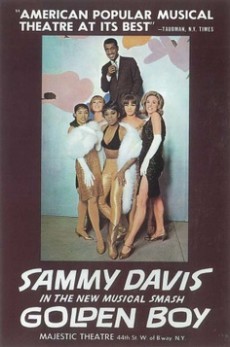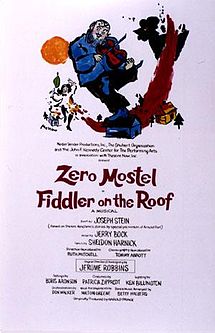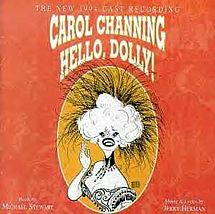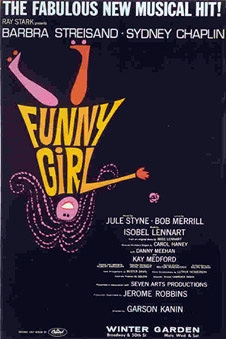
From Broadway To 52nd Street
Ridin’ High is a 1936 popular song, composed and written by Cole Porter, for the stage in his musical Red, Hot and Blue, with book by Howard Lindsay and Russel Crouse. It premiered on Broadway in 1936 and the song was introduced by Ethel Merman.
The musical also introduced the popular song It’s De-Lovely as a romance duet sung by Ethel Merman and Bob Hope, in which they trace their romance from first kiss to marriage to a baby.
The StoryNails O’Reilly Duquesne is a newly wealthy young widow. Loud and brassy, Nails is a former manicurist. She organizes a benefit for her favorite cause, the rehabilitation of ex-convicts. Together with her sidekick (an “ex-con” himself), Policy Pinkle, and her “square” boyfriend, lawyer Bob Hale, she embarks on a nationwide search for Bob’s old girlfriend, which is really the reason for the enterprise. The girlfriend, 18 years earlier, had sat upon a hot waffle iron and so had a unique “imprint”. However, the national lottery that Nails starts gets the attention of the Finance Committee, and they wind up in Washington DC in an even more complicated situation. The Supreme Court declares the lottery unconstitutional, because it would benefit the people.
History
During the out-of-town tryouts, the book was too long and did not blend with the music. The producer Vinton Freedley made numerous suggestions for overhauling the show, which were accepted by all except Porter, until he finally relented. Additional conflicts arose when Freedley assembled the cast and creative team behind the musical Anything Goes, hoping to repeat that show’s success. William Gaxton was part of that cast, however, he withdrew because Ethel Merman’s part was so large, so Bob Hope was cast. The next conflict came over billing for Jimmy Durante and Merman, which was resolved by having their names crisscrossed above the title.
The musical was first titled But Millions!, then Wait for Baby!, before settling on Red, Hot And Blue. The Broadway musical has no connection to the 1949 film musical of the same name with songs by Frank Loesser.
Notable RecordingsBenny Goodman, Chris Connor, Ella Fitzgerald, Michel Legrand, Kate Smith, Mark Murphy, Jeri Southern, Peggy Lee, Teresa Brewer, Carol Lawrence, Doris Day, Johnny Mathis, Cleo Laine, Sue Raney, Hod O’Brien, Robert Palmer, Rebecca Martin, Fay Claassen, and Stevie Holland.

From Broadway To 52nd Street
Golden Boy opened the Majestic Theatre on October 20, 1964 starring Sammy Davis Jr., Billy Daniels, Paula Wayne, Johnny Brown, Lola Falana and Lou Gossett. Charles Strouse & Lee Adams composed the music from which Night Song was plucked to become a jazz standard for a show that ran 568 performances.
The Story: The play reflects the struggle of an ambitious young black man in America and focuses on Joe Wellington, a young man from Harlem who, despite his family’s objections, turns to prizefighting as a means of escaping his ghetto roots to find fame and fortune. He crosses paths with a Mephistopheles-like promoter Eddie Satin and eventually betrays his manager Tom Moody when he becomes romantically involved with Moody’s girlfriend Lorna Moon. In his quest for glory loses his soul and his life.
Broadway History: These innovations in lighting also made advertising on Broadway much more effective. The world’s first electrically lit large commercial billboard was erected over Madison Square in 1892. It read, “Buy Homes On Long Island/Swept By Ocean Breezes” and was paid for by the Long Island Rail Road. Though the sign had disappeared from the New York skyline by 1895, its brief exposure caught the eye of every business owner on Broadway, which by then included the square intersection at W. 42nd, Broadway, and 7th Avenue (the tourist-glutted hotspot we all know and love, “Times Square”, which was named after The New York Times in 1904, when the publication moved into its new headquarters building there, had decided to advertise with the new “spectaculars,” so called because of their large, complex light displays and intricate designs, some flashed, and some even had animated sections that moved.
Sponsored By
www.whatissuitetabu.com

From Broadway To 52nd Street
Fiddler On The Roof opens the curtains at the Alvin theatre on September 22, 1964. Zero Mostel stars in this show that was the first musical to surpass 3000 performances. With 3, 242 it held the record for ten years and reigns as the 16th longest running show in Broadway history Jerry Bock & Sheldon Harnick composed the music for this Tony Award winning production. The tune from the show that would go on to rest alongside other great jazz classics was Matchmaker, Matchmaker.
The Story: In the Jewish village of Anatevka, Russia in 1905 the story follows the life of a dairyman Tevye, the father of five daughters and his attempts to maintain his family and Jewish religious traditions. While outside influences encroach upon their lives, he must cope both with the strong-willed actions of his three older daughters—each one’s choice of husband moves further away from the customs of his faith to finds happiness, love, and financial success through marriage. When all Tevye’s plans fall apart as Russia sustains a revolution, he must flee their destroyed village with his family to America while holding on to his faith and find his own happiness.
Jazz History: The Half Note located at 296 Spring Street on the corner of Hudson Street saw its peak years from 1957 to 1972. Established by Brooklyn-born Mike Canterino who while in the Nay in Florida befriended a local saxophonist named Cannonball Adderley, opened in a desolate location in New York City’s West Village, the club that had been a hard-drinking saloon dubbed the Zombie Bar was renamed and began booking jazz in 1957. Two things separated the Half Note from other clubs. Canterino intentionally integrated his lineups, and changed the industry’s 40-20 set-length standard (40 minutes on, 20 minutes off) by allowing musicians to play as long as they desired—often past the time his cabaret license permitted. Veteran blowers like Ben Webster could play all night long—and did—while experimentalists like Coltrane used the Half Note as a workshop of sorts, turning tunes like the legendary “One Down, One Up” into marathon workouts.
Sponsored By
www.whatissuitetabu.com

From Broadway To 52nd Street
Hello Dolly opened at the St. James Theatre on January 16, 1964 with music composed by Jerry Herman. The show starred Carol Channing & David Burns, Eileen Brennan, Sondra Lee and Charles Nelson Reilly, running for a record 2,844 performances landing it amongst the grand collection of blockbuster hits. It was revived in 1967 with Pearl Bailey & Cab Calloway in the lead roles and in 1969, Barbra Streisand & Walter Matthau took the characters to the silver screen. The title song Hello Dolly and It Only Takes A Moment went on to become a part of the jazz catalogue.
The Story: At the turn of the 20th century in New York City, a brassy and intrepid matchmaker Dolly Galagher Levi is in town to find wealthy Horace Vandergelder a wife. However, unbeknownst to Horace, Ms. Levi has her sights set on him herself. While helping two rich pretenders to find love, Dolly finds romance and a husband for herself in this spoof on love and marriage.
Broadway History: Broadway, previously the home to jazz influenced choreographers like Cole, Fosse, and Robbins, saw a part of its nature change to reflect the mood of the country. While there were still blockbuster musicals of the old type – like My Fair Lady, Hello Dolly, Mame – a new generation of musicals reflected the changes in American society, and dance. Hair was a depiction of the rebellious nature of the hippie movement. And Fosse, that champion of syncopated, tap and minstrel based movement, absorbed the new 60s feel of dance with his hit musical Sweet Charity. In this show, Fosse based much of his movement on the social dances of the 1960s, while injecting his own unique brand of style and angular movement and jutting body parts. The movements of jazz dance had evolved to absorb the blossoming social scene. Broadway was no longer the spawning ground for theatrical jazz dance. It had become a pastiche of old standard styles and movements, and an incubator for a new form of jazz dance.
Sponsored By
www.whatissuitetabu.com

From Broadway To 52nd Street
Funny Girl opened at the Winter Garden Theatre on March 26, 1964 and entered into the fraternity of blockbuster musicals with 1,348 performances. Jule Styne & Robert Merrill composed the music and from the score came the classic tune People, that became a hit long before it premiered on Broadway performed by Barbra Streisand. Joining her in the cast of players were Sydney Chaplin, Jean Stapleton and Lainie Kazan.
The Story: The early years of Ziegfield Follies star Fanny Brice in which Streisand recreates her Broadway triumph. She reminisces about her life as she wanders back to the days of Keeney’s Music hall, her eventual success and the two men in her life. There’s Flo Ziegfeld, who makes her a star and Nicky Arnstein, a gambler, who she marries. Her career flourishes as Nicky’s gambling and prison sentence destroy her marriage. She sings, roller-skates, cracks jokes, loves & marries a gambler, and tugs at your heart in a tour-de-force performance)
Jazz History: The Sixties was the most tumultuous decade in the history of America and the changes were reflected in jazz. Many musicians were falling under the modal-jazz spell of Miles Davis’ Kind of Blue, and the free-jazz influence of saxophonist Ornette Coleman; John Coltrane performs in concert as a member of Miles Davis’ group for the last time, riots break out at the Newport Jazz Festival and Max Roach begins to record his Freedom Now! Suite. The country saw John F. Kennedy elected as the youngest President in U.S. history, we lived the Cuban missile crisis, student sit-ins and segregation protests at restaurants, and the San Francisco Chronicle reports that Dave Brubeck lost $40,000 in bookings from a month-long tour of U.S. southern states because he refused to drop African-American bassist Eugene Wright from his group.
Sponsored By
www.whatissuitetabu.com



